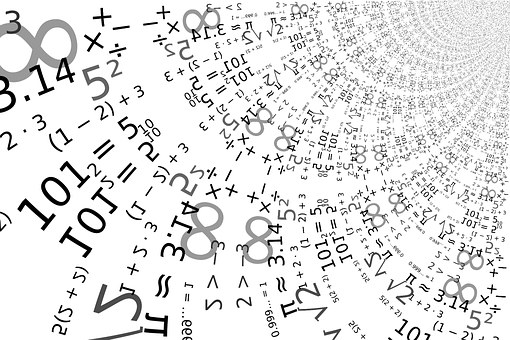POPULAR SERVICES
- Do my Statistics homework
- Academic writing help
- Do my Accounting homework
- Take my online class
- Biology homework help
- Physics homework help
- Assignment help
- Chemistry homework help
- Economics homework help
- Finance homework help
- English homework help
- College homework help
- Buy term paper
- Programming homework help
- Homework help
RELATED services
- Do my algebra homework
- Do my calculus homework
- Take my online math class
- Geometry homework help
- Math homework answers
- Math homework help
- Pay for math answers
- Websites that answers math problems
- Math Homework Help
- Math Homework Answers
- Solve My Math Problem
RELATED content
- What can you do with a mathematics degree
- How to organize your math homework
- Why math homework is important
- How to get math homework done fast
- How to make math interesting for students
- Importance of math education in learning
- How much math homework is too much
- How Math is used in other fields
- How to do math on a computer
- What is calculus
- What is mathematics
- What is geometry
- What is trigonometry
- What is algebra

Students study the history of Mathematics for many excellent reasons. Students develop a deep understanding of the mathematics which they have been taught in class by seeing how it was developed in various places over time. It also encourages flexible thinking and creativity to students by allowing them to see historical evidence on how concepts were viewed and manipulated. Ideally, every mathematics program should cover in detail the History of mathematics. In this post, we are going to divide the history of mathematics into five distinct stages. These stages are:
- Nature's abacus
- Pythagoras
- Babylon and Egypt
- Archimedes and Euclid
- Algebra
Nature's Abacus
It is safe to the assumption that soon after the development of language, the man began counting. The counting of thumbs and fingers provided the nature's abacus. Truly, the decimal system did not come about by accident. This is because the number 10 has been the basis of most of the counting systems in the history. In the old days, notches of stones and sticks were the natural solution whenever any record was needed. However, arithmetic cannot develop easily without an effective numerical system. Due to this, the story of mathematics in the late arrival developed the idea of Zero and the concept of place value. The early history of mathematics involved geometry and algebra. At their primary level, the two of them are like mirror images of each other.
Babylon and Egypt of 1750 BC
Tracing back to 1750BC, the first surviving algebraic and geometrical calculation examples can be derived from Babylon and Egypt. Babylon was far more advanced due to their cuneiform tablets which featured quite complex algebraic problems. Any Babylonian math question would be expressed regarding geometry. However, the nature of the answers would be expressed in algebraic forms. Since the system of the numeric was unwieldy, the calculation of the questions was largely based on tables which could only survive on tablets.
Egyptian mathematics was not complicated like that of Babylon. They used Rhind papyrus which survived. The papyrus was copied by the scribe Ahmes in 1500BC. It contained brainteasers. The papyrus introduced one crucial element of algebra known as h which is used as a standard algebraic symbol to mean quantity of unknown number.
Pythagoras of 6th Century BC
During the classical period, Ancient mathematics reached the modern world through the Greek's work which was building from the Babylonian tradition. One of the known figures among the early set of Greek's mathematicians was Pythagoras.
Pythagoras moved from Greek and went to stay in Crotona; in the heel of Italy. Crotona was at that time a Greek colony. There he established a philosophical sector which they believed that numbers are the unchangeable and underlying truth of the universe. They made many discoveries which reinforced on this numerical faith. The Pythagoreans showed for example that music notes vary with the vibrating string's length. They also proved that whatever the shape of the triangle was, the triangle's three angles always added up to 180 degrees, which is equivalent to the sum of two right angles. Till today, the most famous theorem in the classical mathematics is the Pythagorean Theorem. This theorem is typically an achievement of the Greek mathematicians whose primary interest was geometry.
This interest reached the peak through a compiled work by Euclid in 300BC.
Euclid and Archimedes of 3rd Century BC
Euclid taught at a school in Alexandria during the era of Ptolemy. Although the details of his life are not known, Euclid brilliance was demonstrated in his thirteen books of geometrical theorems called 'The Elements". Euclid presents his books with such clarity that ensures his work is successful. Until the 19th century," The Elements" was Europe's standard textbook in geometry.
Archimedes was a student at Alexandria during the lifetime of Euclid. When he returned to his native home, Syracuse, in Sicily, he exceeded the teacher's original works through his geometrical researches. His fame in history and legacy comes mainly from his discoveries and practical inventions. He is very proud due to his discovery on how to calculate the volume and surface area of cylinders and spheres.
Algebra from 2nd Century A.D
The tradition of Babylonian algebra was revived in Alexandria by the Greeks. A Greek mathematician called Diophantus wrote a treatise known as the" Arithmetica" in AD 200. He used a distinctive sign of minus. The Greek Algebra later spread through China, India, and Japan. The most extensive influence of mathematics was spread through the Arabic transmission of the culture of the Greek.
Want to learn more about the History of mathematics? Contact our math helper online.